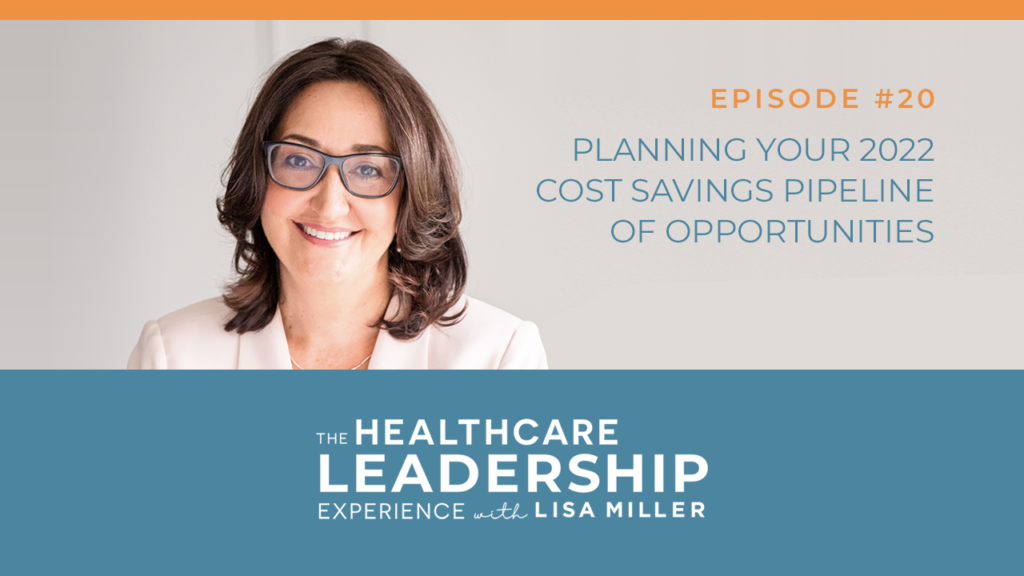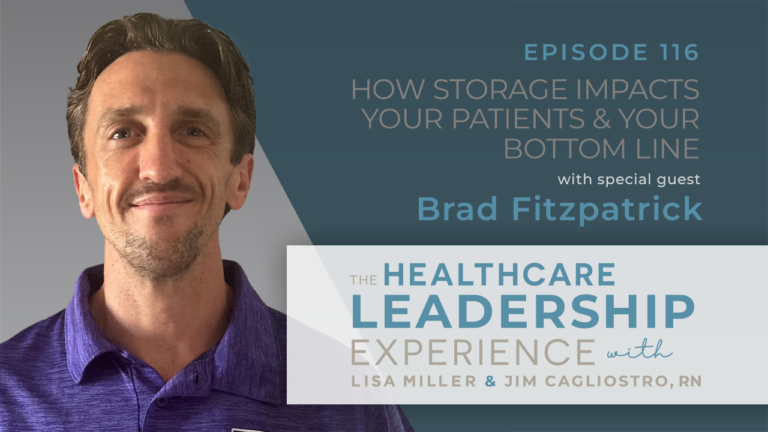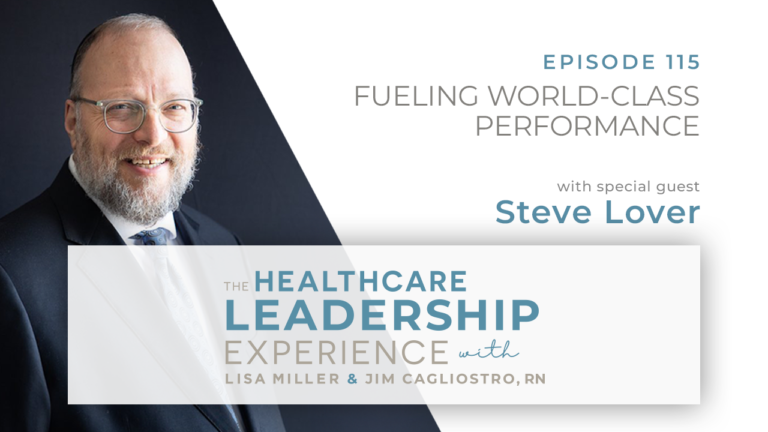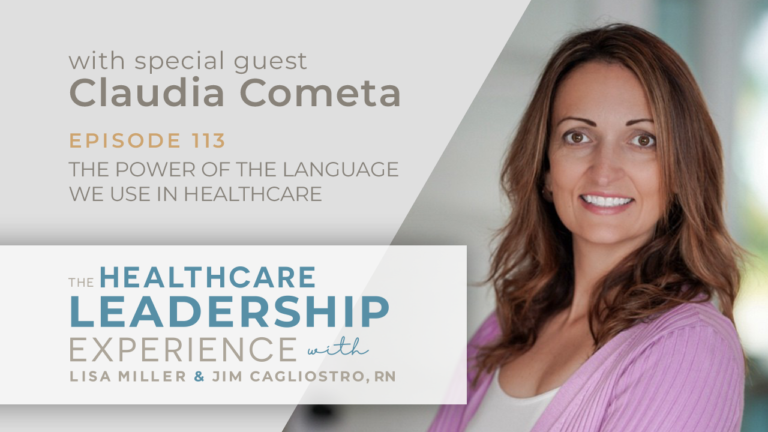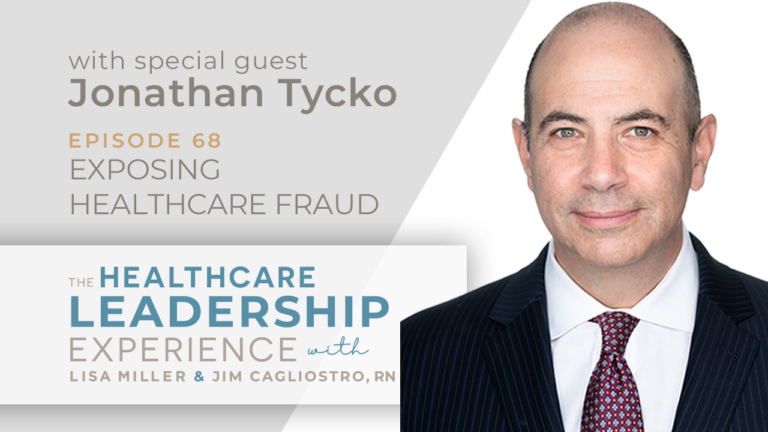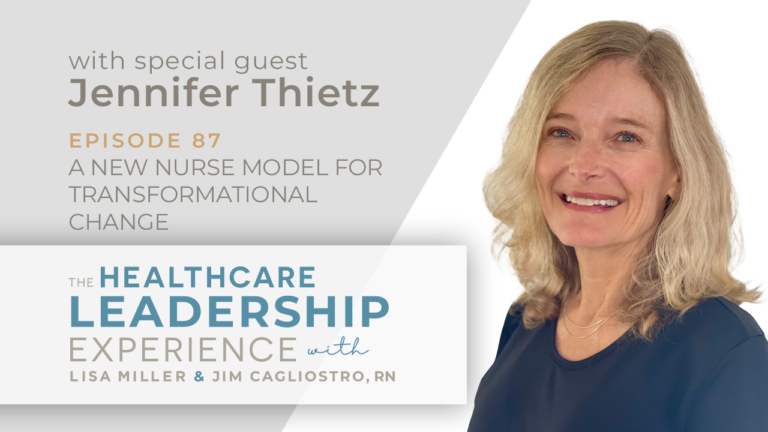In Episode 20 of The Healthcare Leadership Experience, Lisa is joined by her producer, Lisa Larter of The Lisa Larter Group, and Rich Dormer and Bryan Covert from the VIE Healthcare® team. Together they discuss planning your health system’s pipeline of cost savings opportunities for 2022.
As Lisa comments: ‘’Inflation is here and it’s going to get worse….As we go into 2022 and 2023, cost focus, expense focus has to be a number one priority.’’
This episode is sponsored by VIE Healthcare Consulting® which has proudly helped hospitals save $758 million since 1999.
In today’s episode you’ll hear:
The need to identify the cost savings opportunities in the gaps – and why you need to aim higher on savings targets. ‘’If we put a 10 or 15% target and get there, do we miss out on the 22% target?’’
Why every hospital has to look beyond the norms when it comes to benchmarking.
The cost savings opportunities in the unexpected areas of your Physician Preference Items (PPIs) and purchased services spend (Hint: don’t negotiate in silos).
The three parts to a cost savings pipeline:
- Getting the data organized – and why you can’t just build a pipeline on agreements that are due in the next year.
- Get some specificity around areas of spend.
- Prioritize your urgent issues – and the cost savings potential uncovered in COVID tests. ‘’Just because it’s new, doesn’t mean it can’t be benchmarked.’’
The critical need for strong project management in every hospital – and why you should never allow your contracts to auto-renew.
Why healthcare executive leaders need to be involved in every cost reduction initiative in 2022. (To quote Mike Tyson ‘’Everyone’s got a plan until they get punched in the face.’’}’
The importance of planning dates to review your costs semi-annually.
Why engaging an outside party like VIE Healthcare® can help you identify cost savings opportunities – and achieve them.
CLICK HERE TO DOWNLOAD THE PDF TRANSCRIPT
Connect with Lisa:
📧 lmiller@spendmend.com
📱https://www.linkedin.com/in/lisamiller/
CLICK HERE TO OPEN THE FULL TRANSCRIPT
Lisa Miller (00:00):
It’s a planned dates in advance to do this work annually. You have to plan in advance to review semiannually. And engaging an outside party to help is really important. And there’s a number of ways to do it. Now is the time that you want expertise and specialization, inflation is here, it’s going to get worse. Putting together these cost savings pipelines, these cost saving strategies are now more important than ever. There are certainly growth initiatives, revenue initiatives. However, in my opinion, I think as we go into 2022 and 2023, cost focus, expense focus has to be a number one priority. There are just so many opportunities there, it cannot be done haphazardly. We’ve got to do this around budget season. This has to be its own specialization.
Speaker 2 (01:00):
Welcome to the Healthcare Leadership Experience, a place where healthcare leaders will share proven strategies and innovative approaches to leading the clinical and business side of healthcare. This show is sponsored by VIE Healthcare Consulting, who’s proudly helped hospitals save over $700 million in non-labor costs since 1999. Here’s your host, Lisa Miller, founder and CEO of VIE Healthcare.
Lisa Miller (01:23):
Welcome to the Healthcare Leadership Experience. Today’s episode is planning your 2022 cost-savings pipeline of opportunities. And as normal, we have Lisa Larter sitting in with me today, our show producer. So we’re going to have a great discussion on planning your 2022 cost-saving pipeline opportunities. We also have two special guests. We have Rich Dormer and Brian Covert from VIE. So welcome Rich and Brian.
Rich Dormer (01:55):
Thanks for having us.
Brian Covert (01:55):
Thank you, Lisa. Thanks for having me.
Lisa Miller (01:57):
And good morning, Lisa, how are you?
Lisa Larter (01:59):
I am great, Lisa, how are you?
Lisa Miller (02:02):
I’m good. I’m good. I’m looking forward to having this really interesting discussion today because it’s a subject that comes up often, this time of season for us and our clients and also for new prospective clients as well.
Lisa Larter (02:17):
I love it, I’ve never heard anybody talk about creating or planning a cost savings pipeline. It’s a really, really smart idea. Like visually it makes me think about, you know, long-term cost savings strategy, which is so important.
Lisa Miller (02:35):
So it’s interesting because, you know, that’s the, I think the terminology and I think that’s the, you know, the budgetary approach to what hospitals are looking to do. They need a pipeline of cost savings opportunities. And so, you know, they’ve got to plan their budget. They have to plan for their goals. You know, everything rolls up into the organizational goals. And so, you know, the idea of having a pipeline is similar to having a real cost saving strategy. We do a lot of work around having a cost savings pipeline working session, where we spend about two or three hours on two different days with our clients and rolling up our sleeves and really digging into the specificity of making this plan, this cost strategy. But we get a lot of these calls about, can you help us with our pipeline? We need next year’s pipeline.
And so I think it’s an entry point. I think it’s a moment in time where, you know, they’re kind of taking a look at what those opportunities may be. I think the challenge is, is that sometimes it may be too broad. It may be, it doesn’t have enough specificity. You know, it’s, it’s just, it’s putting some numbers on a target and I think that’s great. But I think where we come in and I know Brian and Rich and I talk about it is adding more precision, adding more specific nuance to make sure you’re capturing some of your larger spend, problem areas spend.
There’s high spend, middle spend, low spend, there’s ways to address different aspects, you know, physician preference items, utilization. And so my fear in, you know, putting together some of these cost savings pipelines is that there’s not enough of a specific roadmap that you capture all these different opportunities or areas or nuances. So, uh, Brian, what are your thoughts about, uh, your experience about putting together cost savings pipeline.
Brian Covert (04:29):
I think that’s a great point. And especially, you’re just talking about physician preference items. So when you’re developing that roadmap, are you just looking at it from a benchmarking point of view? We could take 10% of our CRM products, or you’re looking at in terms of a standardization and a much larger initiative. We’re going to right-size the pricing for like implants across all vendors and eliminate those who don’t conform. So there’s a big difference between putting 10% on the board and doing an organizational-wide standardization products with physician support.
Lisa Miller (05:00):
Yeah, I agree. And you know what? Something came up last week that I love that you’ve been working on and it’s true about standardizations, it’s true about pricing, but you find gaps. You find some interesting gaps of new items or items that are maybe limited use and all of these variation or limited use items that are, you know, not always captured are big opportunities. And I think, again, that’s my fear in having a pipeline versus a strategy. And I think the pipeline is important, but having a working session where, as you pointed out, we’re going really deeper, you know, that 10%, maybe 20%. And I think sometimes, if we kind of put a 10 or 15% target and, and you get there, do you miss out on the 22% target that could have been there?
Brian Covert (05:49):
I think that’s absolutely right. And then are you just settling for what everybody’s already accomplished? Are you pushing to something new and better? And then are you just looking at the same initiatives every four years? Are you looking at the ones everybody’s aware of? Spine, total joint CRM — or are you really going through all of your implant spend every case and saying, no, I know this is a specialty vendor and there’s nobody else in the market, but this is, does this price make sense and is anybody else getting a better price?
Lisa Miller (06:15):
Yeah, that’s a great point. You know, achieving to the norms is, that means you’re just going to get the norm. And, you know, we often like to push our clients and, and get them exceeding norms, and we’re able to do that with their help. You know, it’s, it’s a collaborative effort, but, you know, Rich, do you have some thoughts about, uh-
Rich Dormer (06:35):
And, and Brian mentioned, you know, this is from the physician preference items, but it’s the same with the purchase services with that cycle. What we’re seeing is that, you know, the traditional vendors, uh, food, nutrition, EVS, lithotripsy, hemodialysis — these are the ones that are always focused on their bigger spend. And the, the ones that haven’t been traditionally looked at from a purchase service world, they should be looked at every cycle. They should be looked at, you know, during their term as well. But those gaps also exist and they’re bigger in purchase services. There’s a lot more spend that is not visible to most times, to supply chain and, and finance to be able to run reports, to be able to really dive into and find those opportunities.
So when you look at the rev cycle side, you look at support services, you look at the administration, IT, HR, these are a lot of these areas that have been traditionally negotiated and managed in silos and not through supply chain and through finance, that is where the opportunities that we’re seeing. And those are the focus that we bring to the table when we do these strategic pipelines, is to capture all these different areas, different gaps within our organization and then put those in the spotlight to be able to negotiate best pricing, best services, remove duplications, and really just get the best deal in place for the organization.
Lisa Miller (07:50):
Yeah, it’s a great point because a lot of these pipelines are always there looking at the same things, and there’s still opportunities every year to look at physician preference items, to look at new items. They need focus, but there’s so much spend, as Rich mentioned in purchase services, that doesn’t get looked at annually, that doesn’t get a, a real precise review or analysis because it may be sensitive, you know, may take a little longer. It may take getting data from their invoice data for purchases, so that’s gonna, you know, maybe hold things up a little bit.
But I, you know, I think there’s three parts to a cost savings pipeline. It’s getting the data organized, right? So that starts with an AP spend. It starts with PO details. It starts with agreements, looking at your new agreements, looking at midterm agreements, looking at those that are coming due. You can’t just build a pipeline on agreements that are coming due in the next year. It has to be part of looking at those midterm agreements, could be some great opportunities as well as some of those larger agreements. The second part is this high level target opportunity approach is great, but you’ve got to get some specificity around these areas as well. And then third, there are urgent issues, right? There are things that will come up that are coming up and you’ve got to prioritize those.
Those could be service issues. Those could be just a spike in costs. Those could be, you know, as we just experienced new costs as it relates to COVID testing. And we were one of the first organizations, companies in the nation to help hospitals benchmark and get a lower, very competitive COVID test — whether it was outsourced or in-sourced. So there’s always looking at ways, even new areas of spend, urgent areas and still addressing it. Just because it’s new, doesn’t mean it can’t be benchmarked, it can’t be modeled, it can’t be, um, negotiated and that’s really critical.
Rich Dormer (09:48):
And, and as far as when your plan is put together and, you know, again, when you look at a year, so you’re looking at a year and sometimes it’s more, two or three-year plan as well. But most of the time we’re, we’re working with our clients to work on the next year, what the pipeline’s going to look like. So how is that going to be implemented? When is it going to start, three months, six months to be successful within the year? And, you know, Lisa touched upon it, but, you know, prior to this, when we start to put all that data together, you know, it’s important to really understand, you know, project by project, initiative by initiative, who are the stakeholders?
So if we’re pulling in physicians and nurses, we’re looking at the finance team, support services, HR, you know, in some cases, you know, IT is involved in certain initiatives and maybe they’re doing something like we had a client recently and that’s implemented their new EMR system. So we had to make sure that we’re planning based on their priorities, their rate resources. In addition to the data, you know, pulling that together, what vendors, what categories, but also reimbursement. So not only on the physician preference items, but also on some of these clinical purchase services, we’re going to want to know how that reimbursement ties in. So that all has to be planned, those things are not going to be turned around in a week.
But if you put a plan together and you understand how long it’s going to take and the analysis behind it, that will help build that successful plan, because at the end of the day is how quickly you can go. Some initiatives, you know, you might not look at it and say, oh, it’s only about a 10 to $15,000 opportunity, but you can d- get it done in 30 days. You know, other ones that, you know, could be 350 or half a million dollar opportunity might take four to six months depending on the stakeholders, again, with the bandwidth and whatnot. So it’s important to get all those dynamics together and then establish your plan and work with the team on the expectation, what it would look like.
Lisa Miller (11:28):
Yeah, that’s a great point, Rich, and the other area to this that, which you’ve touched upon in, in what you were talking about is project management. And so a lot of times with these, the pipelines needs to come with a hierarchy, you know, of what’s important, what can be done easily, who can do it, but really a strong project plan. And in a future episode, you’ll hear, where we’ll talk about a high-performing project management system. And it’s really important that you have one in place.
You know, it’s not emails or it’s not meetings, it’s not Excel. It’s a real system that does what you need it to do in terms of managing these initiatives that, you know, has several levels of accountability, we use them here at VIE. So definitely, you know, as you’re building your cost savings pipeline, you know, some of my recommendations, Brian, I’d like to get your input on recommendations, but some of my recommendations are you’re going to have to probably carve out, uh, three or four days out of the year.
And that may be one full day or a couple of half days. But you know, when you prepare and you put that time into preparation, you will reap the rewards, right? Fortune favors those who prepare, who have momentum, momentum is key. So we’re big believers in kind of dedicating that time to, you know, that disciplined thinking time, sitting down, going through areas of spend, looking at changes in spend, what are they? Looking at benchmarking, analyzing some of those agreements. We talk about strategic sourcing, but do we talk about strategic monitoring and measuring?
Maybe now is a good time as you’re building your pipeline to look at some of those opportunities to measure monitors, see where you’re at. And then that may be also what funnels in some opportunities, because you’re not as far as long as you thought you were going to be at, you know, in, in that contract or in that cost savings. So, you know, it’s also what new things do you need to consider, and Rich and Brian both spoke about that. Brian, do you have anything else, any of the recommendations?
Brian Covert (13:39):
That’s really comprehensive, and I like where you really talked about the, the contract planning and the project plan, because there’s just so many important details that need to be tracked. If you don’t know contractually, when you need to notify to get out of the contract to renegotiate, you could have a great initiative with a great cost savings opportunity. But just no opportunity to actually engage in it because you just renew for five years without knowing.
Lisa Miller (14:04):
Yeah, yeah. And I kind of wanna talk to you about that because you know what? We may have people listening today that go, oh, that’s just a junior thing to mention renewals, much completely junior. We have that, we have a note auto-renew in all our agreements, or we get notified through our contract management system or we’re on top of that. That’s completely basic, I can’t believe you’re talking about that today.
And then we see day in and day out, extremely smart people, sophisticated systems, processes, health systems, having auto renews in their contracts. And when there could be great opportunities for cost savings, they’ve just re- auto renewed, or there’s a clause, auto renewed at an increase. And I actually think that, you know, if I were going into a brand-new hospital and you know, I was a CFO, I’d want to know all my contracts and when they auto renew.
Brian Covert (15:03):
Yeah. I mean, so much of what you’re talking about, we’ve seen. I’ve worked with clients on initiatives where we thought there was going to be a great opportunity in the clients. Yeah, no, we sent out our notification term, we sent it out six months ago, but actually went to the wrong address. It didn’t go to the address in the contract where they had to send it, vendor never received it, contract renewed for five years, nothing you could do. We’ve seen everything in terms of contracts renewing, and I get what you’re saying. And all those parameters , it’s junior, but that’s honestly one of the first things I go to on any initiative. When’s this contract renewed? Did we do what we need to do to keep it from renewing? Are we able to go in with some leverage? Because you, you just lose that negotiation leverage with auto-renewal.
Lisa Miller (15:47):
Right. No, you do. I mean, certainly we, you know, we’ve done a lot of work with midterm, uh, contracts and there’s way to gain leverage, there’s ways to, you know, kind of still take out cost. But it really does become a bit more challenging, but I think that’s an important aspect to the cost savings pipeline, is when are these contracts renewing? It’s a good point, Brian, any other good points as we wrap this up?
Rich Dormer (16:11):
And we’ll go into it more on the project management side, but, you know, again, it’s establishing with this cost reduction plan for 2022 or, or future, you know, it’s, again, it’s important with, understanding the stakeholders, the bandwidth, and how those individuals will be part of the process. And the biggest piece is the executive leadership to be able to support these initiatives ’cause, you know, Mike Tyson famously said, everyone’s got a plan until they get punched in the face. You know, this is one of those where, when it gets challenging, it gets tough negotiation, if you don’t have the executive leadership supporting these initiatives that they can weigh on, they can come in on, then they’re not going to be successful.
Lisa Miller (16:52):
Yeah. You make a really good point about Mike Tyson’s, uh, comment, because I think we, you know, we all got kind of, you know, been in that circumstance now with COVID and the pandemic. And the first things that went aside, appropriately so, were a lot of these initiatives. So, you know, I think as we lessons learned, as we move forward and we’re still moving through the pandemic, your prioritization of these cost savings products, there still needs to be someone who’s, who’s also running point on that, you know, because those, those costs are still being accumulated and they still need to be looked at.
And I think there’s a couple of things that, you know, to keep in mind, it’s a planned dates in advance to do this work annually. You have to plan in advance to review semi-annually and engaging an outside party to help is really important. And there’s a number of ways to do it. You know, whether that’s a company like VIE that come in and support, help you with a working session, help you identify opportunities, help you achieve those, we think that’s, you know, really important because we’re able to keep push and help support your hospital. While there’s so many different competing priorities, we’re able to continue to advance the initiatives.
You know, there’s other ways too. Let’s say you’ve got a specific initiative and, and you need just a little more resource or people power, you might want to engage somebody in your local college to help with a specific project, you know, or just get some kind of per diem help to help with a specific project. But it’s really important that there’s some time and thought, there’s some expertise, you know, now is the time that you want expertise and specialization. Inflation is here, it’s going to get worse. Putting together these cost savings pipelines, these cost savings strategies are now more important than ever as a way to protect and even further reduce costs.
But I’m writing a short book now on inflation in healthcare. And it is so important as we move into 2022, that you’ve got a plan. Uh, and this plan has to be an assertive, aggressive plan to really help take out costs because the vendors are going to come in now and you are going to see price increases. So partnering with somebody who has specialization, expertise that can really support getting a big part of your initiatives — to be successful quickly is important. So, Lisa, what do you think about all this? Now you’ve heard, uh, Brian and Rich and, and I talk about this. What are your closing thoughts about building a pipeline for cost savings opportunities?
Lisa Larter (19:37):
Well, it sounds really complicated to me for someone who doesn’t work in healthcare, it sounds like there are a lot of moving parts and a lot of things that really need to be considered, and that you really need to kind of zoom back and look at the big picture and figure out what areas you need to get really granular and specific at. And, you know, in my experience, working with business owners, not hospitals, I have found that it’s really hard to do that by yourself. So I can see why hospitals bring you and your team in to do this work with them, because it really does feel like it’s a big initiative to take on and requires a lot of discipline to revisit on a regular basis to ensure that what you are projecting in your cost savings pipeline actually comes to fruition.
Lisa Miller (20:33):
Yeah, that’s a great point. You know, how do you measure the pipeline to what really has happened? How do you, you know, does your organization do look back work? Look back work is important just to see what do we do, you know, versus what we said we’re going to do now? You don’t have to spend a lot of time on it, but look back work is important.
Lisa Larter (20:53):
Right. And if you look at the small business world, for example, you look back at your sales and you look at your trends and then you project what you can expect to see happen in the future. You can do the exact same thing with cost savings, but it requires discipline and dedication in order to be able to do that. So when I think about your cost savings pipeline, it’s like people can actually forecast and then inspect what they are forecasting to save to ensure that they’re getting the savings that they projected when they do this type of work. But if they don’t do this type of planning work, it’s impossible to do that.
Lisa Miller (21:31):
Right. And leadership is depending on these cost-savings pipelines now more than ever. There are certainly growth initiatives, revenue initiatives. However, in my opinion, I think as we go into 2022 and 2023 cost focus, expense focus has to be a number one priority. There are just so many opportunities there. It cannot be done haphazardly. We’ve got to do this around budget season. This has to be its own specialization. And because, what Rich mentioned before, there are things that don’t fall into the supply chain that are in individual departments and people can be sensitive if they want to look into an agreement, into their department. And there’s lots of other sensitivities that happen. And I, you know, all those sensitivities and silos have to be removed because there is a great opportunity for a big takeout, a big — not only strategic sourcing — but strategic, measuring and monitoring. And that’s how hospitals are going to get to this greater level of cost savings.
So I want to thank Rich and Brian from the VIE team and Lisa, thanks for sitting in with me today. And we’re going to do this again next week and continue to do that because we have some great conversations. So, I encourage everybody to listen to our previous episode, cost aware for patient care. And our next show is episode 21, why engage a healthcare consulting firm. I’d love to hear from you what’s a top strategy for your cost savings in 2022? And, you know, leave us some feedback if you’d like to hear something on future episodes, let us know. So thank you for joining the Healthcare Leadership Experience.
Leah (23:26):
Hi, this is Leah. You are listening to my mom’s podcast, the Healthcare Leadership Experience.
Fernando (23:33):
Hi, this is Fernando, if you would like to speak with my mom, just email her.
